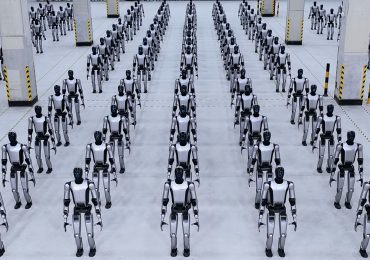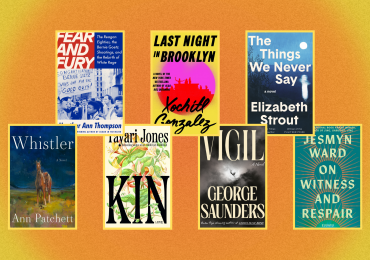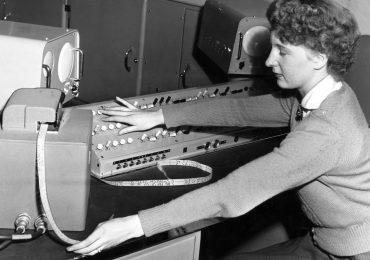2024 has seen many devastating budget cuts to libraries. Earlier this year, New York City’s Mayor Eric Adams proposed to cut more than $58 million from the city’s libraries. (After public protests, Adams walked back his statement and the city’s libraries were spared—for now.) The National Archives and Records Administration has its slimmest budget in nearly three decades, relative to its holdings. The American Library Association recently wrote to its members, “Every librarian knows that funding is under threat for libraries in communities of all sizes and all across the nation.”
[time-brightcove not-tgx=”true”]
The fact is that the health of the nation’s libraries is a national security issue. We learned this lesson once, and profoundly, during World War II. The story of how underinvesting in our libraries almost lost us the war is worth retelling—especially because what we’re losing by cutting back on acquisitions—or, worse, digitizing and then throwing out archives—is exactly what we had to send spies to acquire overseas during that war.
Read More: Attacks on Libraries Are Attacks on Democracy
The attack on Pearl Harbor on December 7, 1941, pulled America into a war the country had tried to treat as none of its business—and pushed the government to more quickly resolve a critical problem: Its lack of a meaningful intelligence infrastructure. The country had shut down its last major signals intelligence office—and with it the capacity to decrypt and read foreign diplomatic messages—in 1929, at the order of Henry Stimson, the secretary of state. “Gentlemen do not read each other’s mail,” he said.
In July 1941, President Franklin Roosevelt had appointed William Donovan, a Wall Street lawyer, to start up a new intelligence agency, as it was growing more evident that the U.S. might not be able to keep itself free of the war in Europe. Donovan understood that he couldn’t make up for the decades, even centuries, of intelligence experience that other spy agencies already had—that if he was to compete, he had to build something new. His great innovation was a branch called Research and Analysis (R&A), in which analysts trained among library stacks read everything they could, from novels to newspapers to trash, and turned what they read into intelligence insights. Their work represented a new type of spycraft.
Donovan whisked these librarians and professors from their campuses—and tossed them, to their surprise most of all, into a global spy thriller—because his legal training had taught him the value of going to the literature. Stationed, at first, in the Library of Congress, they used books and documents to answer all kinds of crucial questions, such as: What does the shore we plan to invade look like? After the military crosses that shore and captures the nearest town, where will they find railway equipment, munitions factories, Red Cross pharmacies, and telegraph offices? What are the street addresses of the factories in Berlin they want to bomb? Is it better to target a factory that makes tanks or, say, a factory that makes ball bearings, which are essential for building tanks?
U.S. intelligence quickly discovered that libraries didn’t have the most basic information that the country needed in this crisis. For example, at the time of America’s entry into the war, its cartographic resources were, as one commentator said, “utterly deficient.” If you scoured every map collection in the country, you would find only two full map portfolios of Japan.
R&A sent agents to hunt through libraries and confiscate and copy whatever maps they could. The New York Public Library became a virtual outpost of the OSS, with map librarians dividing their time between their regular duties and intelligence work; a librarian in the University of California system later wrote that “old timers used to tell… of coming to work and finding that the map library had suddenly become a top security area protected by 24-hour armed guards.” Because the libraries’ map collections were so outdated, R&A agents were sometimes forced to adapt 19th-century maps for the age of fighter planes and radar.
In order to fix the nation’s knowledge deficit, the Office of Strategic Services, Donovan’s new intelligence service, sent the war’s most unlikely spies, professors and librarians, overseas as undercover agents to hunt down maps and other documents. By far, the most successful of these document hunters was Adele Kibre, who worked in Stockholm, dodging the city’s (Gestapo-affiliated) police and sneaking whatever her superiors wanted out of libraries, universities, and government offices. Another was Joseph Curtiss, a mild-mannered Yale professor who plied his secret trade in Istanbul.
The productivity of these secret agents was enormous. Joseph Curtiss sent home more than 4,000 pounds of books and other texts while working in Istanbul; Adele Kibre sent home 20,000 documents a week. The OSS was hungry for resistance literature, German newspapers, maps, travel guides, telephone books, novels, scientific journals, and publications on topics that ranged from aeronautics to finance to metallurgy to mining to shipbuilding to synthetic petroleum. Any document might have the key to winning a battle, a campaign, the war.
Thanks to these unlikely spies, library materials poured into the United States from Europe. University libraries, together with libraries and archives in New York City and all across the country, collected thousands of pounds of materials during the war. Meanwhile, the R&A branch expanded to almost a thousand members, working in places like the Lincoln Museum, the National Archives, and the Library of Congress. Analysts studied novels, scholarly books, reference books, industry directories, telephone directories, magazines, newspapers, postcards, travel guides, and more. Nobody would expect these kinds of documents to turn into brilliant strategic assets, and yet they became a critical resource during the war.
After the war, politicians resolved to never again let our libraries be so dramatically deficient. They invested in public and university libraries and approved ambitious programs to expand them. Returning intelligence agents became the heads of major libraries, and they transformed the library world. For example, David Horace Clift, a former NYPL employee who helped to lead Adele Kibre’s document collecting unit, served for two decades as the chief executive of the American Library Association. Frederick Kilgour, who belonged to the same unit, became the founding director of Online Computer Library Center, which developed the world’s largest, most used online library database, WorldCat. Wilmarth Lewis, a Yale librarian who built a cataloging system at the OSS to organize the agency’s intelligence, turned the OSS cataloging system into the cataloging system that all U.S. libraries used.
Politicians invested in libraries after the war because they understood it to be an act of American patriotism and a vision for American national security. They had learned, the hard way, the value of having strategic book reserves. Today, some 80 years after the Allied victory, we’ve forgotten that lesson.
Those who argue that our underfunded libraries are becoming obsolete in the age of artificial intelligence and digitized books are ignoring just how vulnerable these new technologies are. Internet access is a major military target—as in the case of Russia blocking Ukraine’s Starlink satellite internet service. Turning libraries into access points for databases—scanning their holdings, then destroying the original documents, as Britain’s Ministry of Justice recently proposed to do with one of its archives—is a terrible idea. In 2023, hackers attacked the digital infrastructure of the British Library, making the online catalogs, and thus the library itself, largely unusable for weeks. And digital holdings represent just a fraction of all the books and documents in print around the world.
Libraries are a small investment to make in order to ensure we don’t repeat the mistakes of the last world war. In 2020, the total funding for public libraries in the United States was $14.61 billion. That’s less than 1% of total military spending.
I hope that we’ll never see another war like World War II again, and I hope that we use our nation’s intellectual resources to cultivate peace. But if the worst happens, we’ll be better off for having invested in our libraries. We learned that 80 years ago, at great cost.
Leave a comment








